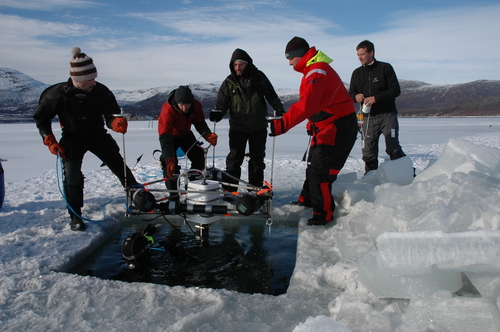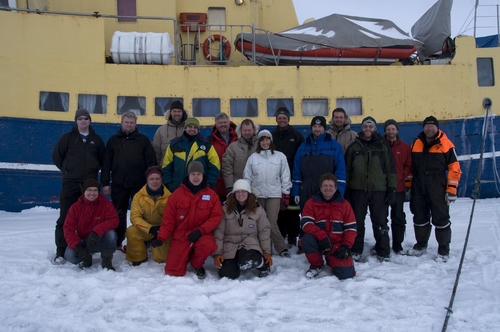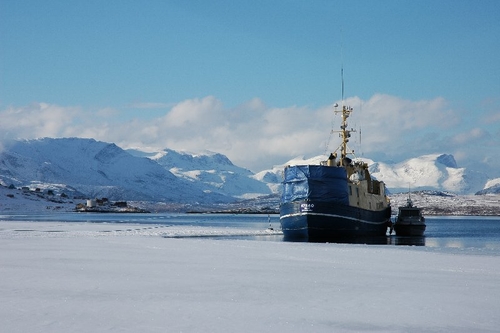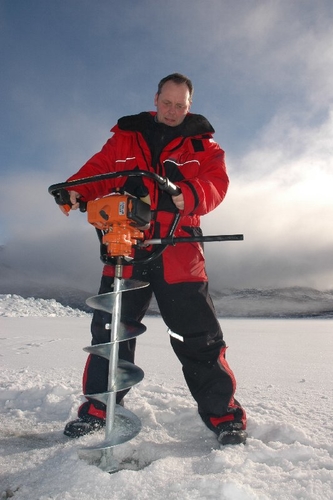International scientist team researches the sea ice dynamics Published 18.03.2010

Scientists from Greenland, Denmark, United Kingdom, Finland, Germany, Belgium and USA, met in Kapisillit, about 100 km north-east of Nuuk, on 8 – 17 March to investigate the role of sea ice in controlling the air-sea flux of gases. The main purpose of the work was to gain more knowledge about internal processes in sea ice and the exchange of heat, gases and other components between air, snow, sea ice and water column.
More than 100 different parameters were recorded on a daily basis in the physical, chemical and biological components related to air, snow, sea ice and water column. In addition, newly developed underwater eddy equipment were tested for the flux of heat, salts and gases between sea ice and the underlying water column. Comparison between different measuring techniques at the air-ice interface (chambers and eddy) was performed to gain new knowledge about internal processes in the sea ice and to standardize future measurements. Furthermore, comparison of different techniques in measuring the gas content and chemical components within the sea ice itself was made.
One of the questions related to the mixing of salts and gases rejected from the sea ice into the water column received special attention through measurements of the small scale turbulence, eddy kinetics, mixing, shear and eddy diffusivity below the sea ice and across different water column layers. The biological influence on gas and nutrient dynamics was included through both bacterial and sea ice algal production measurements. Finally, the chemistry including the content of calcium carbonates was included in the field studies. The sea ice in Kapisigdlit was on the arrival to the field site 60 – 100 cm thick. The campaign covered freezing and melting sea ice conditions.

The sea ice research team in front of “Kisaq”. From left: Paul Batty, Greenland Climate Research Centre; Hermanni Kaartokallio, University of Helsinki; Thomas Juul-Pedersen, Greenland Climate Research Centre; Jean-Luis Tison, University of Bruxelles, Belgium; Søren Rysgaard, Greenland Climate Research Centre; Bruno Delille, University of Liège, Belgium; Michael Fischer, AWI Germany; David Thomas, University of Wales, United Kingdom; Dorte Søgaard, Greenland Climate Research Centre; Bjarne Jensen; NERI, Denmark; Lise Lotte Sørensen, NERI, Denmark; Ronnie Glud, Greenland Climate Research Centre, SAMS, United Kingdom; Kunuk Lennert, Greenland Climate Research Centre; Dan Mcginnis, IFM, Germany; Mikael Sejr, NERI, Denmark; Matthew Long, University of Virginia, USA; Dirk Koopmans, University of Virginia, USA; Peter Schmidt Mikkelsen, Greenland Climate Research Centre. Photo: Michael Fischer.

“Kisaq” anchored at the ice edge near Kapisillit was used as base camp during the ice campaign. Photo: Peter Schmidt Mikkelsen

Drilling hole in the sea ice. Photo: Peter Schmidt Mikkelsen

